Archived Fire Damage Blog Posts
The Hazards of Leaving Appliances Plugged in and Unattended: Expert Tips to Prevent Fires
12/18/2024 (Permalink)
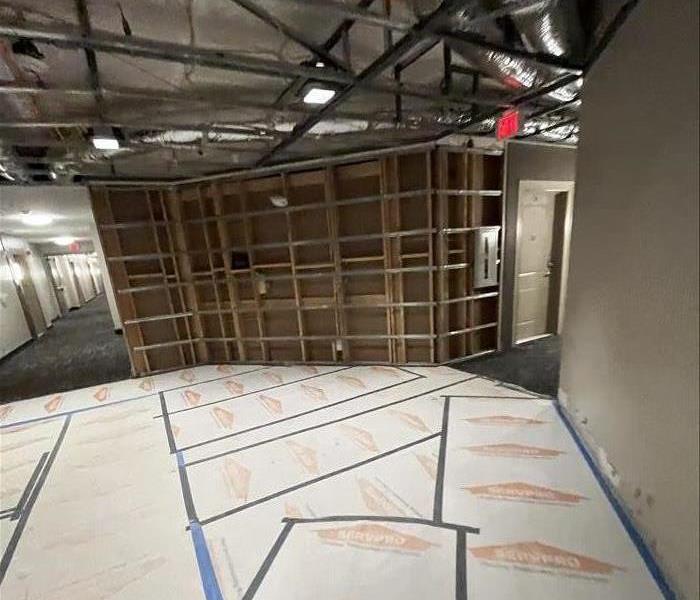 Explore the hazards of leaving appliances plugged in and unattended, provide expert insights, and offer practical tips on how to minimize these risks.
Explore the hazards of leaving appliances plugged in and unattended, provide expert insights, and offer practical tips on how to minimize these risks.
In today’s busy world, it’s easy to forget about an appliance you left plugged in or running while you step away. However, leaving appliances unattended in Providence, RI, can lead to unexpected dangers, including electrical fires. At SERVPRO®, we’ve seen the devastating effects that electrical fires can have on homes and businesses. In this blog, we’ll explore the hazards of leaving appliances plugged in and unattended, provide expert insights, and offer practical tips on how to minimize these risks.
Why Leaving Appliances Plugged in is Risky
Many household appliances are designed to make our lives easier, but when left plugged in or unattended, they can become fire hazards. Faulty wiring, power surges, or simply overheating can lead to electrical fires, which spread quickly if not caught in time. According to the National Fire Protection Association (NFPA), electrical fires caused by equipment or appliances are sometimes responsible for home fires, which have resulted in $1.5 billion in property damage in the past.
Common Appliances That Pose a Fire Hazard When Left Plugged In
While not every appliance in your home presents a significant fire risk, certain devices are more prone to causing problems if left unattended or plugged in. Here are some of the most common appliances that you should be cautious about:
- Space Heaters: Portable space heaters are a leading cause of house fires, especially when placed near flammable materials such as curtains, furniture, or bedding.
- Kitchen Appliances: Items like toasters, coffee makers, and ovens can easily overheat or short-circuit if left running without supervision.
- Clothes Dryers: Lint buildup in the dryer vent can quickly become a fire hazard if the appliance is left running and unattended.
- Hair Dryers and Straighteners: Personal care devices generate significant heat and can cause burns or fires if left plugged in.
- Phone Chargers: Although phone chargers may seem harmless, some can overheat and pose a risk of electrical fires if left plugged in for too long.
The Dangers of Power Surges and Overloaded Circuits
Another hazard of leaving appliances plugged in and unattended is the risk of power surges and overloaded circuits. Power surges, often caused by lightning strikes or fluctuations in the power grid, can damage appliances or cause electrical fires. Similarly, overloaded circuits occur when too many devices are plugged into a single outlet, causing excessive electrical current that can overheat wiring and lead to a fire.
To prevent these hazards, consider using surge protectors for sensitive electronics like computers, TVs, and gaming consoles. Additionally, avoid overloading outlets with multiple high-wattage appliances like space heaters and hairdryers. This simple precaution can go a long way in protecting your home from an electrical fire.
Fire Prevention Tips for Appliance Safety
The good news is that many of the hazards associated with leaving appliances plugged in and unattended can be prevented with some basic safety precautions. Here are expert tips to help reduce the risk of an appliance-related fire:
- Unplug Appliances When Not in Use: Always unplug appliances such as toasters, coffee makers, and space heaters when you’re finished using them. This eliminates the risk of overheating or short circuits while you’re away.
- Inspect Electrical Cords and Outlets: Regularly check your appliances for frayed or damaged cords, as these can easily spark a fire. If you notice any wear or tear, replace the cord or appliance immediately.
- Keep Flammable Materials Away: Ensure that appliances like space heaters and clothes dryers are positioned far from flammable objects such as curtains, papers, and clothing.
- Install Smoke Alarms: Make sure you have working smoke alarms installed throughout your home, especially in areas where appliances are frequently used, like the kitchen or laundry room.
- Use Timers for Appliances: If you need to leave an appliance running, such as a slow cooker, consider using a timer to automatically turn it off after a set period. This can prevent the appliance from overheating or running longer than necessary.
Why Routine Maintenance is Essential
One of the most effective ways to minimize the risk of appliance-related fires is to regularly maintain your appliances. This includes cleaning lint from your dryer’s vent system, inspecting your space heater for any signs of damage, and ensuring that your electrical outlets are in good condition. Regular maintenance helps prevent mechanical failures and keeps your appliances running safely.
Conclusion
Leaving appliances plugged in and unattended can lead to devastating consequences, including electrical fires that can spread rapidly throughout your home. By taking proactive steps such as unplugging unused appliances, inspecting cords for damage, and avoiding overloaded outlets, you can significantly reduce the risk of fire in your home. At SERVPRO, we’re Here to Help® you keep your property safe with expert fire damage restoration services and fire prevention advice.
Incorporating these safety practices into your daily routine can help protect your home from appliance-related fire hazards. For more tips on fire prevention or assistance with fire damage restoration, reach out to SERVPRO today!
Protecting Your Pets from Home Fires: Essential Tips for Safety
8/14/2024 (Permalink)
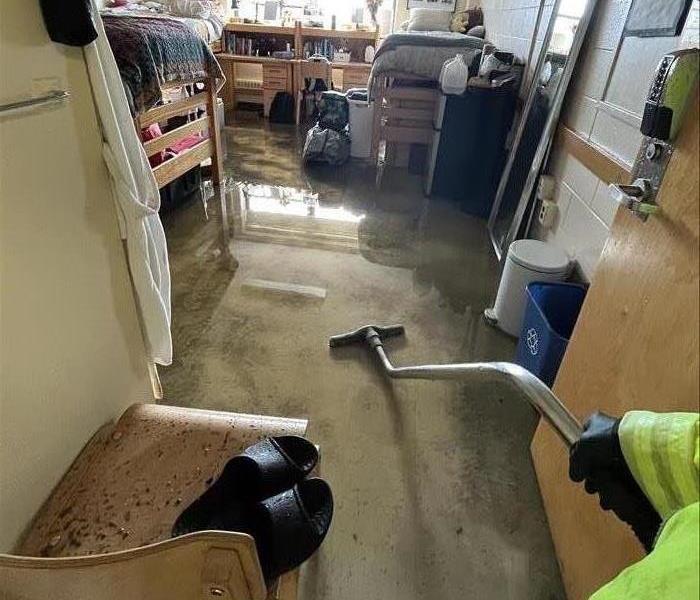 We provide you with practical tips and strategies to protect your pets from home fires.
We provide you with practical tips and strategies to protect your pets from home fires.
Home fires in Providence, RI, can be devastating, not just for humans but also for our beloved pets. Ensuring the safety of pets in case of a fire is a crucial aspect of emergency preparedness. In this blog, we will provide you with practical tips and strategies to protect your pets from home fires.
Understanding the Risk of Home Fires
Home fires can occur unexpectedly and spread rapidly, posing a significant threat to all household members, including pets. According to the National Fire Protection Association (NFPA), pets or wild animals are responsible for starting nearly 1,000 home fires each year. Being proactive in fire prevention and preparation is essential to safeguard your furry friends.
Fire Prevention Tips for Pet Owners
Pet-Proofing Your Home
One of the first steps in fire prevention is pet-proofing your home. Ensure that potential fire hazards are out of your pet's reach. This includes:
- Keeping electrical cords secure and away from chewing.
- Use flameless candles instead of traditional ones.
- Storing flammable materials in secure locations.
Installing Smoke Detectors
Smoke detectors are a vital tool in fire safety. Make sure you have working smoke detectors installed on every level of your home and test them regularly. Consider using monitored smoke detectors, which are connected to a monitoring center that can alert emergency services even when you’re not home.
Creating a Pet Emergency Plan
Identifying Safe Areas
Designate a safe area in your home where your pets can be quickly and easily confined in case of an emergency. This area should be free of potential fire hazards and easily accessible for firefighters.
Practicing Evacuation Drills
Regularly practicing evacuation drills with your pets can help ensure a swift and safe exit during a fire. Train your pets to come when called and use leashes or carriers to guide them to safety. Familiarize them with the sound of smoke alarms so they are less likely to be frightened in an actual emergency.
What to Do During a Fire
Quick Action Steps
If a fire breaks out, prioritize your safety and that of your pets:
- Alert everyone in the household and follow your evacuation plan.
- Use leashes or carriers to secure pets and lead them to safety.
- Never re-enter a burning building to save pets. Inform firefighters about the pets' location.
After the Fire: Caring for Your Pets
After a fire, your pets may be disoriented and stressed. Provide a calm environment and seek veterinary care if needed. Check your home for any lingering hazards before allowing your pets to return.
Protecting your pets from home fires involves a combination of prevention, preparation, and quick action. By following these tips, you can ensure the safety and well-being of your furry family members in the event of a fire. Stay prepared, stay safe, and keep your pets protected.
By incorporating these strategies, you can minimize the risk of home fires and ensure that your pets remain safe. Remember, preparation is key to keeping everyone, including your pets, out of harm's way.
For more information on fire safety and restoration services, visit SERVPRO® today.
The impact of wildfires on air quality and respiratory health
4/19/2024 (Permalink)
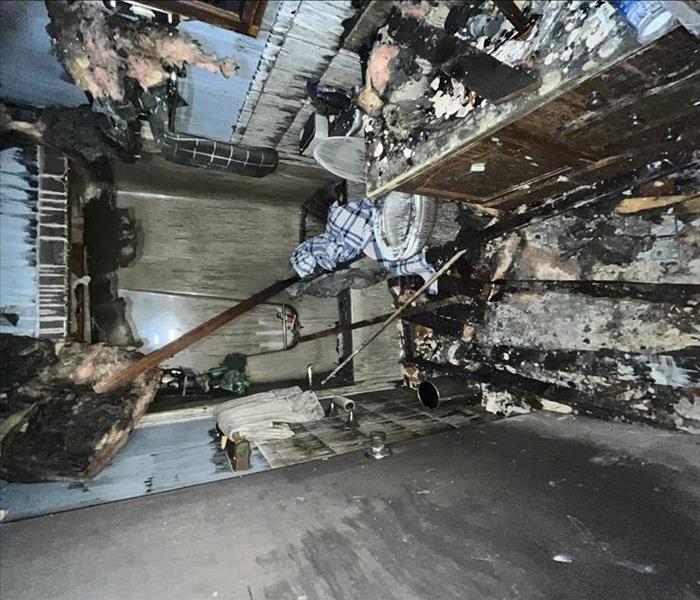 SERVPRO is ready to respond to your fire damage emergency day or night!
SERVPRO is ready to respond to your fire damage emergency day or night!
As we witness an increase in the frequency and intensity of wildfires, it becomes crucial to address the far-reaching consequences on air quality and, subsequently, respiratory health. At SERVPRO®, we understand the importance of a safe and healthy living environment. In this blog post, we'll explore the impact of wildfires on air quality and offer practical tips to protect your home and well-being.
Understanding the Threat
Wildfires release a myriad of pollutants into the air, including particulate matter, carbon monoxide, and volatile organic compounds. These airborne contaminants can infiltrate your home, compromising indoor air quality and posing significant risks to respiratory health. Individuals with pre-existing conditions such as asthma, allergies, or chronic respiratory diseases are especially vulnerable. Now let’s discuss how to protect your indoor space.
Seal Entry Points
Ensure that windows and doors are tightly sealed to prevent outdoor pollutants from entering your home. Use weather stripping and caulk to seal any gaps.
Invest in Air Purifiers
Consider using HEPA air purifiers to filter out fine particles and contaminants. These devices can significantly improve indoor air quality, creating a safer environment for you and your family.
Proactive Cleaning
Regularly clean and dust surfaces to minimize the accumulation of particles. SERVPRO® offers professional cleaning services to thoroughly address the aftermath of wildfire-related contamination.
Stay Informed
Monitor air quality indexes in your area and stay updated on wildfire forecasts. This information will help you make informed decisions to protect your home and family.
Let’s dive into some respiratory health tips now that we’ve covered the basics.
Use N95 Masks
If you need to go outdoors during wildfire incidents, wear N95 masks to reduce the inhalation of harmful particles.
Stay Hydrated
Adequate hydration helps your body flush out toxins and supports overall respiratory health. Drink plenty of water, especially during periods of poor air quality.
Create a Clean Room
Designate a room in your home as a clean space with minimal outdoor air infiltration. Use air purifiers in this room for added protection.
As wildfires become a more common occurrence, taking proactive measures to protect your indoor air quality is paramount. SERVPRO is committed to assisting you in maintaining a healthy living environment. By following these tips, you can safeguard your home and respiratory health against the impact of wildfires. For professional cleaning and restoration services, trust the experts at SERVPRO to help you breathe easier in the face of environmental challenges.
The Aftermath of Fire: Understanding Fire Damage to Electrical Systems and Appliances
11/21/2023 (Permalink)
When a fire occurs in a home or a building, it is not only the flames that pose a threat but also the damage caused by smoke and heat. One of the most significant and dangerous impacts of fire is the damage it can cause to electrical systems and appliances. In this blog, we will discuss the effects of fire damage on electrical systems and appliances and ways to safeguard your home against future electrical hazards.
Smoke Damage
Smoke causes significant damage to electrical appliances as it contains toxic chemicals, ash, and soot that can harm their various components. The presence of smoke in electrical devices can cause short circuits, corrosion of metal components, and damage to sensitive electronic parts, leading to permanent damage to the appliances.
Heat Damage
The heat and flames generated by a fire can cause severe damage to electrical systems and appliances. High temperatures cause melting, warping, and cracking of various parts of electrical systems, including circuit breakers, wires, and plastic casings. These damages can lead to arcing and short circuits and, in severe cases, can start new fires.
Water Damage
The use of water to extinguish a fire can also cause damage to electrical systems and appliances, even if they were not in contact with the flames. Water can cause electrical wiring and components to corrode and increase the risk of short circuits. It can also cause damage to electronic devices, including computers, televisions, and home appliances, leading to their malfunction.
Smoke Residue Build-Up
Smoke residue build-up on electrical appliances can significantly impact their performance and increase the risk of fire. Smoke residue can get into devices' internal components, causing corrosion and blockages in air vents, leading to overheating. Smoke build-up must be cleaned off the devices to prevent the accumulation from causing further damage.
Damage Assessment
After a fire, it is essential to have your electrical systems and appliances inspected by a professional to assess the extent of any damage they have sustained. Professionals can identify hidden dangers not readily visible and advise on whether items need replacement or repair.
In conclusion, fire damage to electrical systems and appliances can have severe consequences, leading to fire hazards, electrocution, or even death. Preventive measures such as regular maintenance, timely assessment, and smoke detector installation can significantly reduce electrical hazards in homes and buildings. If a fire does occur, it is crucial to have a professional inspection of your electrical systems and appliances. Early assessment can detect potential dangers and prevent further damage, ensuring the safety of both your property and the people who reside or visit your property.
Fire Sprinkler Systems: How They Work and Why You Need Them
4/29/2023 (Permalink)
A fire sprinkler system is an automated system that detects and suppresses fires. It uses water to extinguish flames, prevent the spread of fire, and protect people and property from damage.
Components of a Fire Sprinkler System
The water supply for a sprinkler system needs to be able to provide enough pressure so that it can reach all areas of your home or business before running out during an emergency situation. The water supply can come from either municipal sources or private well, however, if you live in an area where there are earthquakes or floods then you should consider having two separate sources for backup purposes.
If possible try not using PVC pipes because they tend not to last as long as other materials such as copper or steel due to corrosion issues over time which could cause leaks within your pipes causing damage inside your walls/ceilings etc.
How Does a Fire Sprinkler System Work?
A fire sprinkler system is made up of a network of pipes and valves that are connected to the building's water supply. The pipes are connected to the sprinkler heads, which are installed in various locations throughout your home or business. When a fire breaks out, heat from the flames activates a device inside each sprinkler head called an electric solenoid valve (ESV). This causes water from nearby pipes to flow through small openings in their bodies into an expansion chamber within them and then out onto floors, walls and other surfaces where it cools down hot spots caused by flames.
Sprinklers can be activated by either heat or smoke detectors; however most systems use both technologies together as part of what's called "dual detection." If there's no smoke present but only heat from an electrical short circuit or other source causing damage to wiring insulation near one location within your structure then this may trigger activation too!
Types of Fire Sprinkler Systems
Wet pipe systems - These are the most common type of sprinkler system and use water from a municipal water supply or private well. The water is stored in an underground tank, which can be located either inside or outside your home. When there's a fire, this type of system uses gravity to distribute water through pipes that run throughout your home.
Dry pipe systems - These also use municipal or well water but have no storage tank; instead, they rely on pressurized air pressure to keep water flowing through pipes after they've been activated by heat sensors or manual activation switches (usually installed by firefighters). They're best suited for areas where frequent fires are unlikely because they don't have much capacity for storing excess amounts of liquid when there isn't one happening--and if there is one happening, it might take too long for firefighters to get there before everything burns down anyway!
Fire sprinkler systems are an important part of a building's fire protection plan, and they can help to protect you and your property from the devastating effects of a fire.
6 Steps of Fire Damage Restoration
8/24/2022 (Permalink)
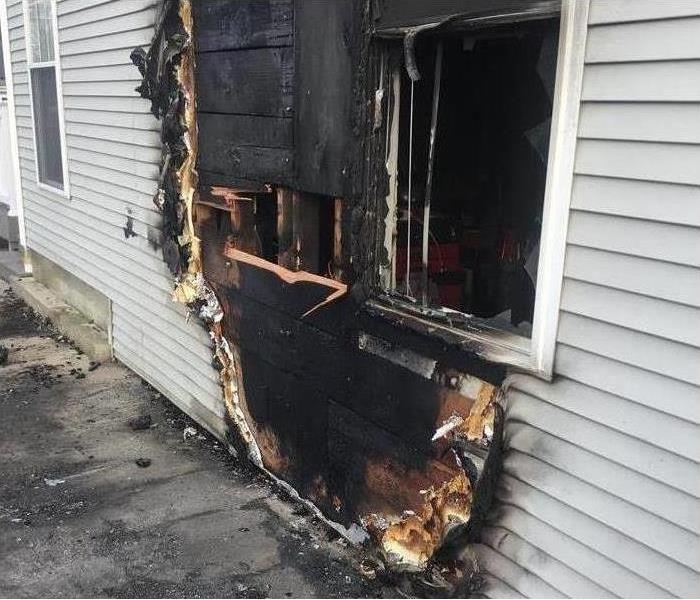 A house fire can be devastating.
A house fire can be devastating.
What Can You Expect During Professional Fire Restoration?
A house fire can be devastating enough, but what happens after firefighters extinguish the flames? There will be fire damage directly from the fire and the smoke, soot, extinguishing chemicals and water. The cleanup process must begin immediately to avoid additional loss.
1. Inspection
Once the flames are out, professionals will do a thorough inspection of all of the affected areas. The assessment tells them the extent of destruction and the best remediation method.
2. Content Removal and Cleaning
All damaged materials is removed from the home, including personal belongings, appliances and furniture. Fire remediation professionals can determine what is salvageable and what isn’t.
3. Structure Stabilization
A fire can cause significant damage to the roof and structural core of a home. Therefore, the structure needs board-up services and roof tarping to secure it from further loss (e.g., vandalism or weather).
4. Water Damage Restoration
Cleaning up water damage is a significant part of most fire restoration jobs. Unsalvageable water-soaked materials are then removed and thrown out. The cleanup professionals continue the drying process by extracting standing water and using industrial fans and dehumidifiers to dry the area. It needs to be dried as quickly as possible to avoid more damage such as mold growth and wood rot.
5. Cleaning and Disinfection
Powerful cleaning products remove soot from all surfaces. The professionals use ozone generators and other industrial equipment to remove smoke odor from all areas with smoke damage. The fire damage cleanup specialists then thoroughly clean and disinfect the entire home and the remaining contents.
6. Rebuilding
Finally, the final reconstruction begins returning the home to its original condition. Structural damage is rebuilt. Then, new drywall and flooring is installed.
If your home in Providence, RI, goes up in flames, the damage cleaning and fire restoration process will need to begin as soon as possible. Taking quick action helps avoid additional damage to the property.
3 Ways the Pros Will Remove the Smoke Smell From Your Home
6/6/2022 (Permalink)
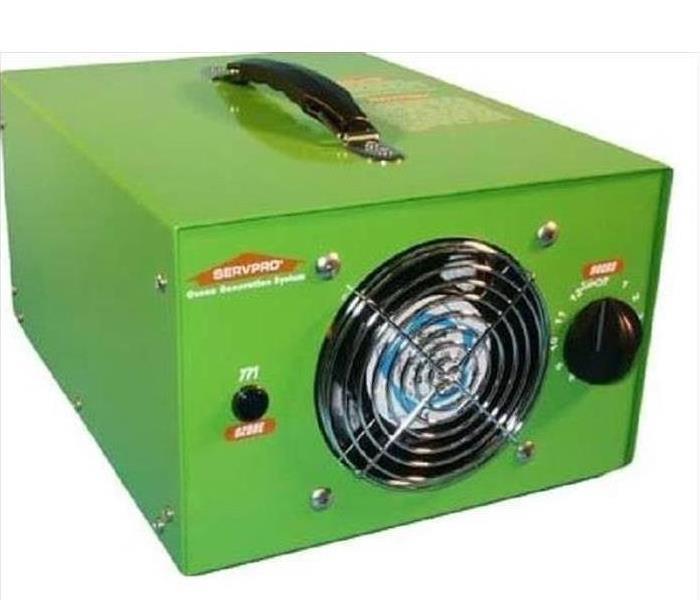 Ozone machines help to clean out the air.
Ozone machines help to clean out the air.
Three Ways To Remove Smoke Odor From Your Home
Even after the flame has been extinguished and the charred remains of your belongings have been removed, you'll notice that the smell of smoke lingers in your Providence, RI, home. Instead of using masking agents, such as air fresheners, to cover up the smell, the professionals cleaning your home will follow a strict protocol to keep the smell at bay. Here are three ways they will eliminate the smoke smell from your home.
1. Remove Smoke Damage Residue
The first step in smoke cleaning is to remove the damage. This damage includes items burned in the fire and soot and smoke left on the walls. The cleaners will use a special vacuum to ensure that all traces of soot are removed from all surfaces. They will then use a specialized cleaner to remove the soot off the walls, which helps keep the smell from returning.
2. Filter the Air
Even though you may not see it, there will be many soot and smoke particles in the air, which will cause the smoke odor to return over time if not treated properly. The odor removal professionals will use air filtration devices to clean and filter the air circulating throughout your home. If the smell remains after filtering the air, they will also use ozone machines to help clean the air, ensuring that the smoke cleaning process is successful.
3. Seal the Surfaces
As the final step of the cleaning process, the cleaners will seal the surfaces in your home damaged by smoke. The specialized sealing agent will prevent any smoke particles from seeping through and can be painted over so there won't be any evidence of the fire left.
Doing a thorough smoke cleaning can take some time and patience. However, when you trust the professionals to do it, you can rest assured knowing it's done correctly and that the smells won't return.
How To Prepare for a Business Fire
5/21/2022 (Permalink)
Steps In Fire Preparation
Commercial fires can damage a company’s building, but businesses in Providence, RI, can prepare for a business fire by planning ahead. Taking these four steps in fire preparation allows businesses to minimize risk and fire damage in the case of an emergency.
1. Establishing a Fire Safety Plan
Employees should be trained in how to exit the building in the case of a business fire. Local fire marshals or the building’s property manager can help determine the best escape route. Additionally, the business can compile a list of emergency contact numbers, including first responders, important clientele and a fire restoration company.
2. Installing Proper Equipment
Fire codes typically require businesses to install a sprinkler system and smoke detectors, as well as have one fire extinguisher per floor of the company’s building. However, businesses should consider having more fire extinguishers available, as they are the best tool for employees to put out small fires. Companies should regularly test the batteries in the smoke detectors and invest in fire blankets and first aid kits.
3. Conducting Appropriate Training
Employees need to be trained in how to use any fire safety equipment. Businesses can instruct workers on how to properly operate fire extinguishers and administer first aid. Routinely conducting fire drills will also ensure employees know how to execute the safety plan.
4. Determining a Fire Damage Recovery Plan
If a commercial fire occurs, having a plan for restoring operations assists the company in returning to work as soon as possible. Once the property has been deemed safe, employees can recover items from the premises and begin the process of fire restoration with the help of trained professionals.
Taking the proper steps to prepare for a business fire helps companies navigate the dangers efficiently and safely. Knowing what to do in the case of an emergency ensures a business survives a fire and can continue to serve customers after the incident.
 Explore the hazards of leaving appliances plugged in and unattended, provide expert insights, and offer practical tips on how to minimize these risks.
Explore the hazards of leaving appliances plugged in and unattended, provide expert insights, and offer practical tips on how to minimize these risks.






 24/7 Emergency Service
24/7 Emergency Service



